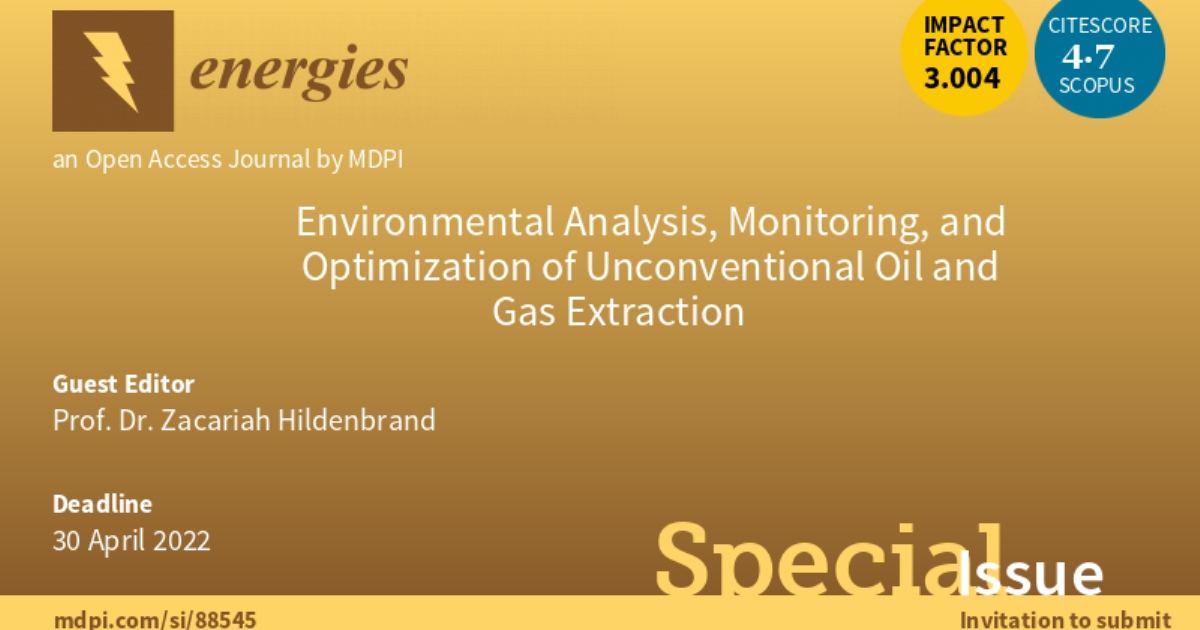Environmental Analysis, Monitoring, and Optimization of Unconventional Oil and Gas Extraction
A special issue of Energies (ISSN 1996-1073). This special issue belongs to the section "H1: Petroleum Engineering".
Deadline for manuscript submissions: closed (15 May 2023) | Viewed by 11598

Special Issue Editor
Special Issue Information
Dear Colleagues,
I trust that you are all doing well. I would like to invite you to submit your research for publication in a Special Issue of Energies (I.F. 2.7) entitled “Environmental Analysis, Monitoring, and Optimization of Unconventional Oil and Gas Extraction”. This particular issue will feature original research, commentaries, and review articles that address pertinent topics in the shale energy sector. These include produced water analysis and management, flare gas mitigation and air quality monitoring, and environmental reconnaissance.
Thank you very much for your time and consideration.
Prof. Dr. Zacariah Hildenbrand
Guest Editor
Manuscript Submission Information
Manuscripts should be submitted online at www.mdpi.com by registering and logging in to this website. Once you are registered, click here to go to the submission form. Manuscripts can be submitted until the deadline. All submissions that pass pre-check are peer-reviewed. Accepted papers will be published continuously in the journal (as soon as accepted) and will be listed together on the special issue website. Research articles, review articles as well as short communications are invited. For planned papers, a title and short abstract (about 100 words) can be sent to the Editorial Office for announcement on this website.
Submitted manuscripts should not have been published previously, nor be under consideration for publication elsewhere (except conference proceedings papers). All manuscripts are thoroughly refereed through a single-blind peer-review process. A guide for authors and other relevant information for submission of manuscripts is available on the Instructions for Authors page. Energies is an international peer-reviewed open access semimonthly journal published by MDPI.
Please visit the Instructions for Authors page before submitting a manuscript. The Article Processing Charge (APC) for publication in this open access journal is 2600 CHF (Swiss Francs). Submitted papers should be well formatted and use good English. Authors may use MDPI's English editing service prior to publication or during author revisions.
Keywords
- shale energy
- hydraulic fracturing
- produced water
- water management
- hydrocarbon mitigation
- point source attribution





